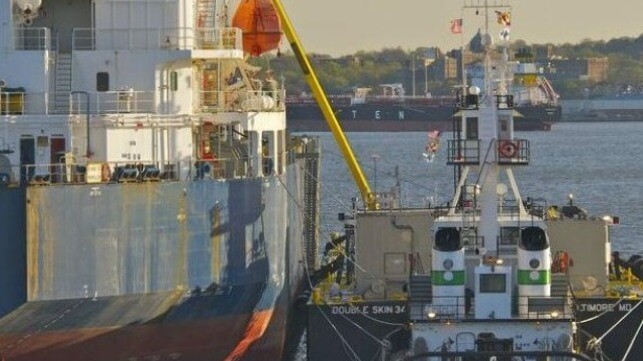Could onboard carbon capture extend the life of fossil bunkers?
Posted on September 12, 2022 at 11:48 p.m. by
The Maritime Executive
Onboard carbon capture is the only technology capable of making conventional marine fuels compatible with emissions targets, and some technologists believe it could be a way out of the marine industry’s future fuel dilemma. Its prospects boil down to thorny engineering questions: will the plant fit on board? Will there be enough space and dead weight to contain the CO2? And where will the captured carbon go once discharged? All will require significant investment and R&D to address.
ABS predicts that investments in onboard carbon capture will increase over the next decade as carbon regulations increase and carbon markets become more mature, and he presented a positive outlook for the technology.
“We consider this to be an attractive solution worth investigating,” says Georgios Plevrakis, Vice President of Global Sustainability at ABS. “It presents many challenges in application, optimization, energy management and storage. If you look at the most mature technologies right now, which are amine-based chemical absorption systems, they require considerable extra power to operate, and for every ton of fuel you consume, you produce three tons of CO2 to store, which takes up about three cubic meters of space. [if liquefied].”
Given the technical challenges, DNV believes that onboard carbon capture will have a relatively limited role to play in the green transition. “We are trying to be open-ended when it comes to this quest for decarbonisation, and we are engaging in some onboard carbon capture projects,” said DNV Maritime CEO Knut Ørbeck-Nilssen. “Personally, I think it makes a lot more sense to try to do [carbon capture] on land, because you get a different scale effect and it’s easier with the technology to do it in land facilities. I think carbon capture on board will play a major role, it’s doubtful.”
Others predict that carbon capture could have practical niche applications in shipboard service. For example, LNG carriers – which operate on boil-off gas from their own cargo tanks – will continue to burn natural gas for the foreseeable future and could benefit from carbon capture, says Rolf Stiefel, Regional Managing Director of Bureau Veritas M&O. Likewise, short sea shipping operators who can offload captured carbon frequently – before the CO2 weight accumulates – could see some benefits.
On-board carbon capture is also more than just an on/off proposition, and there may be sweet spots where capturing some of the CO2 from the exhaust helps an existing vessel achieve a target of specific emissions. Partial capture of emissions saves cost, weight and volume, as the installation required would be smaller.
Another niche application could be particularly handy, according to Torleif Stokke, head of marketing at Alma Clean Power. Solid oxide fuel cells (SOFCs) can turn natural gas into high-efficiency electrical power, and the exhaust gases are a stream of CO2 and high-purity water. With relatively little separation, this carbon stream could be captured and stored on board. “Carbon capture discussions are much more relevant when you have a CO2 stream that is already concentrated,” Stokke says.
Work is well underway on the development of carbon capture facilities for onboard use. Value Maritime already has several reference installations in operation and several major shipyards are designing their own systems, including Samsung Heavy Industries. Qingdao-based scrubber maker Headway has designed a much smaller system for use on ships, which it says will make the technology viable for installation. Thanks to a new agitation tank design, the footprint is a fraction of that needed for other alternatives, according to spokesman Mike Zhang.
Regardless of how the onboard carbon capture concept looks today, BV’s Rolf Stiefel notes that technical developments can change the outlook for a new technology in unexpected ways. After all, sulfur scrubbers were once widely considered too bulky and impractical to use on ships – before enterprising marine engineers figured out how to turn them into a compact and economically efficient way to keep HFO viable.


Comments are closed.